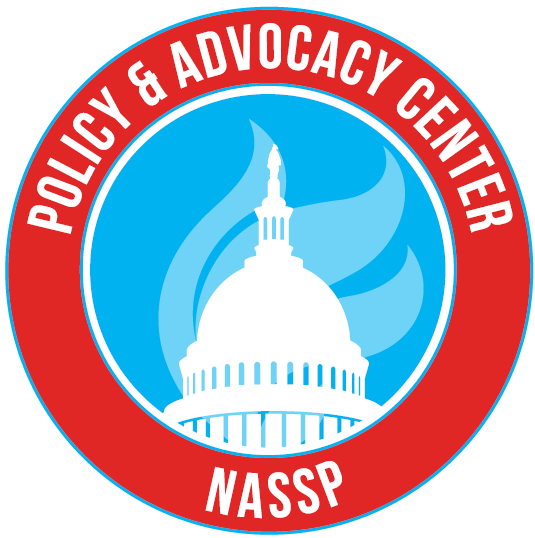To highlight principal shortage trends, examine school leader recruitment issues, and offer policy recommendations for improving school leader recruitment efforts at the federal, state, and local level.
According to the Institute for Education Statistics, one in five principals working in schools in the 2011-12 school year left their school by the 2012-13 school year. Additional research shows that one out of every two principals is not retained beyond their third year of leading a school. School leaders who are retiring, transferring schools, or pursuing new opportunities within the education sector are not being replaced by enough qualified candidates. As a result, many school districts across the country report principal vacancies and a serious lack of qualified applicants to replace them.

The demand for employment of elementary, middle, and high school principals will grow 6 percent nationwide by the year 2022 due to population increases. This surge in demand will increase the financial burden on districts since the cost to recruit, hire, prepare, mentor, and continue training principals can cost school districts between $36,850 and $303,000, with typical urban school districts spending $75,000 per principal. Many school districts across the country are facing a teacher and principal shortage that requires immediate attention and careful long-term planning.
Guiding Principles
- While there can be successful teachers in failing schools, there are no effective schools without effective school leaders. As a result, school leadership is the key to closing achievement gaps and increasing student performance in all subjects across all grade levels.
- Leadership is second only to classroom instruction among all school-related factors that contribute to individual student achievement.
- With the passage of the Every Student Succeeds Act, principals face even greater uncertainty around state policy decisions concerning new accountability requirements, principal evaluation systems, and funding for schools.
- High-quality, sustained professional development for principals focused on instructional leadership, organizational management, schoolwide reform, innovation, and other 21st century practices are lacking. On average, states spend less than 4 percent of federal Title II dollars on principal professional development activities with several states opting to make no investments at all.
- Increased responsibilities and accountability without incentives – not the least of which is commensurate pay – have sorely hampered school districts’ abilities to attract and retain quality candidates. Superintendents cite the most frequent barrier discouraging potential candidates is that the compensation for the position is not sufficient to encourage applications.
- Postsecondary-level education and training programs have not been audited to determine the effectiveness of these institutions in preparing principals for the new challenges and requirements of the position.
- Few school districts have structured recruitment programs that systemically seek out the best principal candidates, or implement training programs to “grow” future principals.
Recommendations
Recommendations for Federal and State Policymakers
- Adopt the Professional Standards for Educational Leaders 2015 and align principal evaluation and support systems to the standards.
- Increase funding for school leader professional development, training, mentoring, reforming school leader certification, and tenure systems.
- Pass legislation that would provide loan forgiveness, grant, and/or tax credits to school leaders who commit to working in high-need schools over a seven-year period.
- Conduct a systemic study of effective principals, particularly those who serve in our most challenging settings.
- Examine models of distributed leadership as a method for making the principalship more manageable.
- Take action to elevate public perception of the profession by emphasizing the principalship as a call to service that is central to the well-being of communities, the economic success of individual states, and the strengthening of our nation’s democracy.
- Develop a federal campaign to promote the education profession and encourage more individuals to become teachers and principals.
Recommendations for District Leaders
- Improve teacher and school leader recruitment efforts through increased collaboration between school districts and postsecondary institutions.
- Establish centralized data systems that modernize recruiting practices and analytics for matching principals to schools, with a focus on retaining and diversifying the workforce. The data should then be used for future hiring and placement decisions and should also be sent to the program where each school leader was trained.
- Ensure the principal’s salary is commensurate with the job responsibilities. Raising salaries for school administrators is a must if schools are to make the principalship more attractive to a new generation of school leaders.
- Provide significant and meaningful ongoing coaching and professional development to support the practicing principal’s continuing education in instructional leadership practices that will improve schoolwide instructional practice and student achievement.
- Decrease the gap between principal training and practice. Many of today’s preparation programs are irrelevant to and inadequate in developing the skills and competencies required for the principalship. Preparation programs must include a clinical component comparable to other professional preparation programs and be oriented toward competencies judged critical to principal effectiveness in improving instruction, teacher quality, and student achievement.
Recommendations for School Leaders
- Increase advocacy efforts at the federal, state, and local level to ensure funding and policy decisions meet the needs of their community, school, and professional growth as a leader.
- Encourage others to aspire to the principalship and provide assistant principals and other emerging leaders with increased responsibilities and professional development that will adequately prepare them to lead schools.
- Participate in evidence-based mentoring and residency programs
- Complete federal, state, and district staffing surveys to provide policymakers with a better understanding of current job demands and opportunities for improvement.
Resources
- Beach, G. (2010). Conditions affecting the decision to seek or not seek a position as a school assistant principal/principal. [Abstract]. Retrieved from University of Nebraska Omaha Digital Commons.
- Clifford, M., & Chiang, E. (2016, August 25). The great American principal turnover – and how districts can stop the churn. Real Clear Education. Retrieved from http://www.realcleareducation.com/articles/2016/08/25/the_great_american_principal_turnover_1303.html
- Coalition for Teaching Equality. (2016). Building a strong and diverse teacher and principal recruitment pipeline. Retrieved from http://coalitionforteachingquality.org/images/upload/201606_Recruitment.pdf
- Doyle, D., & Locke, G. (2014, June). Lacking leaders: The challenges of principal recruitment, selection, and placement. Retrieved from Thomas B. Fordham Institute https://edex.s3-us-west-2.amazonaws.com/publication/pdfs/Lacking-Leaders-The-Challenges-of-Principal-Recruitment-Selection-and-Placement-Final.pdf
- George W. Bush Institute. (2016). A framework for principal talent management. Retrieved from http://gwbcenter.imgix.net/Resources/gwbi-framework-principal-talent-mgmt.pdf
- Institute of Education Sciences. (2016). Trends in public and private school principal demographics and qualifications: 1987-88 to 2011-12. Washington, DC: U.S. Department of Education. Retrieved from http://nces.ed.gov/pubs2016/2016189.pdf
- Lerum, E. (2016). A policymaker’s guide to improving school leadership. Retrieved from Thomas B. Fordham Institute and CRPE http://schoolleadershippolicytoolkit.com/author/
- Mendels, P. (2016). Perspective: Building principal pipelines. The Wallace Foundation. Retrieved from http://www.wallacefoundation.org/knowledge-center/Pages/Perspective-Building-Principal-Pipelines.aspx
- Oliver III, J. (2013). A study of assistant principals’ perceptions of the principalship and their career aspirations. Retrieved from Seton Hall University Dissertations and Theses (ETDs). (Paper 1924).
- School Leaders Network. (2014). Churn: the high cost of principal turnover. Retrieved from http://connectleadsucceed.org/sites/default/files/principal_turnover_cost.pdf
- Turnbull, B. J., Anderson L. M., Riley, D. L., MacFarlane, J. R., & Aladjem, D. K. (2016). Building a Stronger Principalship Vol 5: The Principal Pipeline Initiative in Action. Retrieved from Policy Studies Associates, Inc. http://www.wallacefoundation.org/knowledge-center/Pages/Building-a-Stronger-Principalship-Vol-5-The-Principal-Pipeline-Initiative-in-Action.aspx

